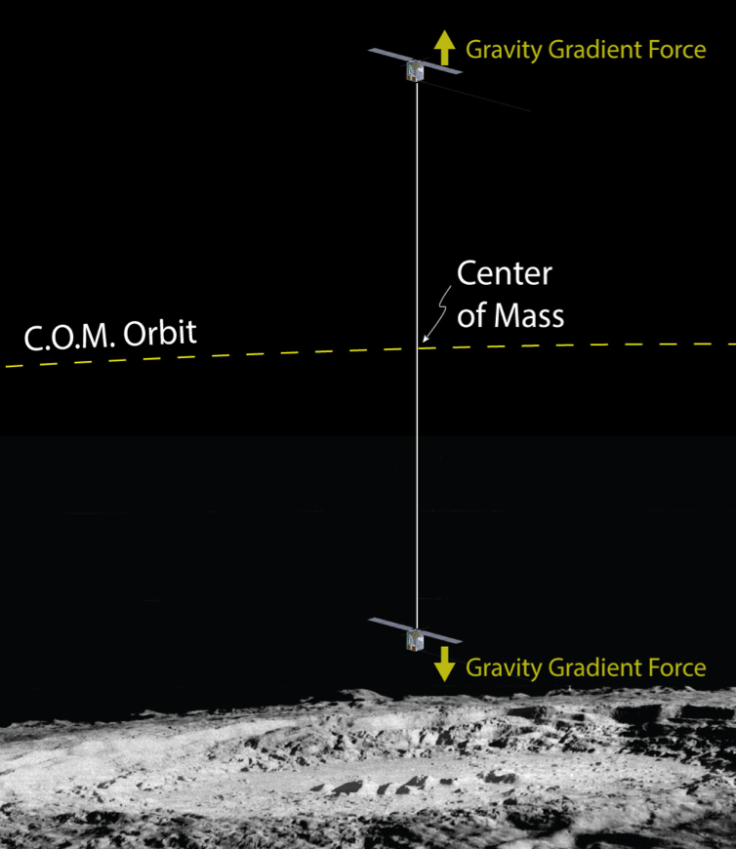NASA Mission: How Did The Moon's Surface Get Its 'Tattoos?'

NASA is planning to send two nanosatellites called CubeSats to to study the swirl-like patterns on the surface of the moon. Currently researchers are unaware of how the “tattoos” ended up on more than 100 different parts of the moon, according to NASA.
A team was recently chosen to further develop a full mission plan to observe the swirls called BOLAS. The mission is in the concept stages but would involve tethering two of the CubeSats together with a thin tether spanning 112 miles.
Read: The Moon Has As Much Water In Its Mantle As Earth’s Interior
The idea is to have 12-unit CubeSats and once those satellites reach an fairly stable and low-maintenance orbit above the moon’s surface. The the two would separate from one another while still connected by the 112 mile-long tether. One satellite would travel 118 miles upward from the moon’s surface while the other dropped to hover just about 6 miles above the surface.
The tension in the tether would create a quasi-stable orbit at the center of the tether which would allow the lower CubeSat to stay in low orbit. Without the tether to the higher orbiting satellite, the low-orbit one would require more fuel than the CubeSat could carry. The reason it is so difficult for the orbiting object to stay in place is the mass sitting on the moon’s surface that changes greatly and can pull the orbiting object lower and crash it or push it off course. Counteracting this requires a lot of extra maneuvers, something the tether concept would eliminate, says NASA.
Additionally, the two satellites experiencing such different parts of the space around the moon would also offer even further information. The two satellites would be equipped with identical instrument suites that would be capable of measuring the lunar hydrogen cycles at both altitudes. The satellites would orbit for a year.
Read: Cool Space Objects Named For 4 Famous People

The researchers think that the formation of the swirls on the moon may have something to do with the magnetic anomalies and space weather. This hypothesis is grounded in observations that indicate there was once nits of ancient magnetic fields where in the lunar crust where the swirls are.
A mission that allows close-to-ground measurements and data collection is the only way to get a solid answer about how the swirls were formed though. While the researchers planning the possible mission have clues about how the swirls former, those have only helped them come up with several hypotheses. The they formed from plumes of material ejected from comets that hit the moon. That there is an existing magnetic field over the swirls that sorts fine dust particles on the moon or that solar wind responds to magnetic forces and creates the swirls as a shield.
© Copyright IBTimes 2024. All rights reserved.




















